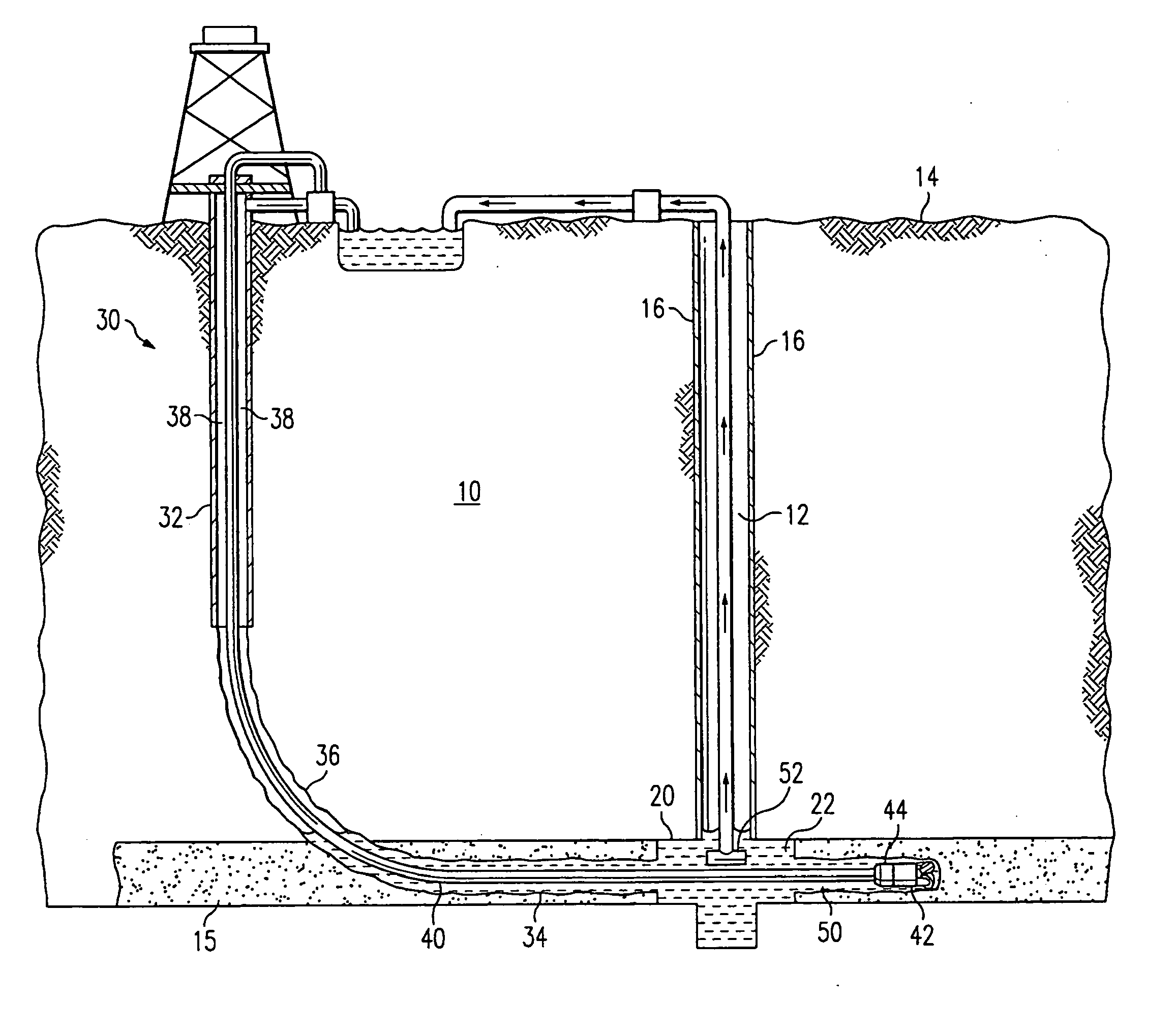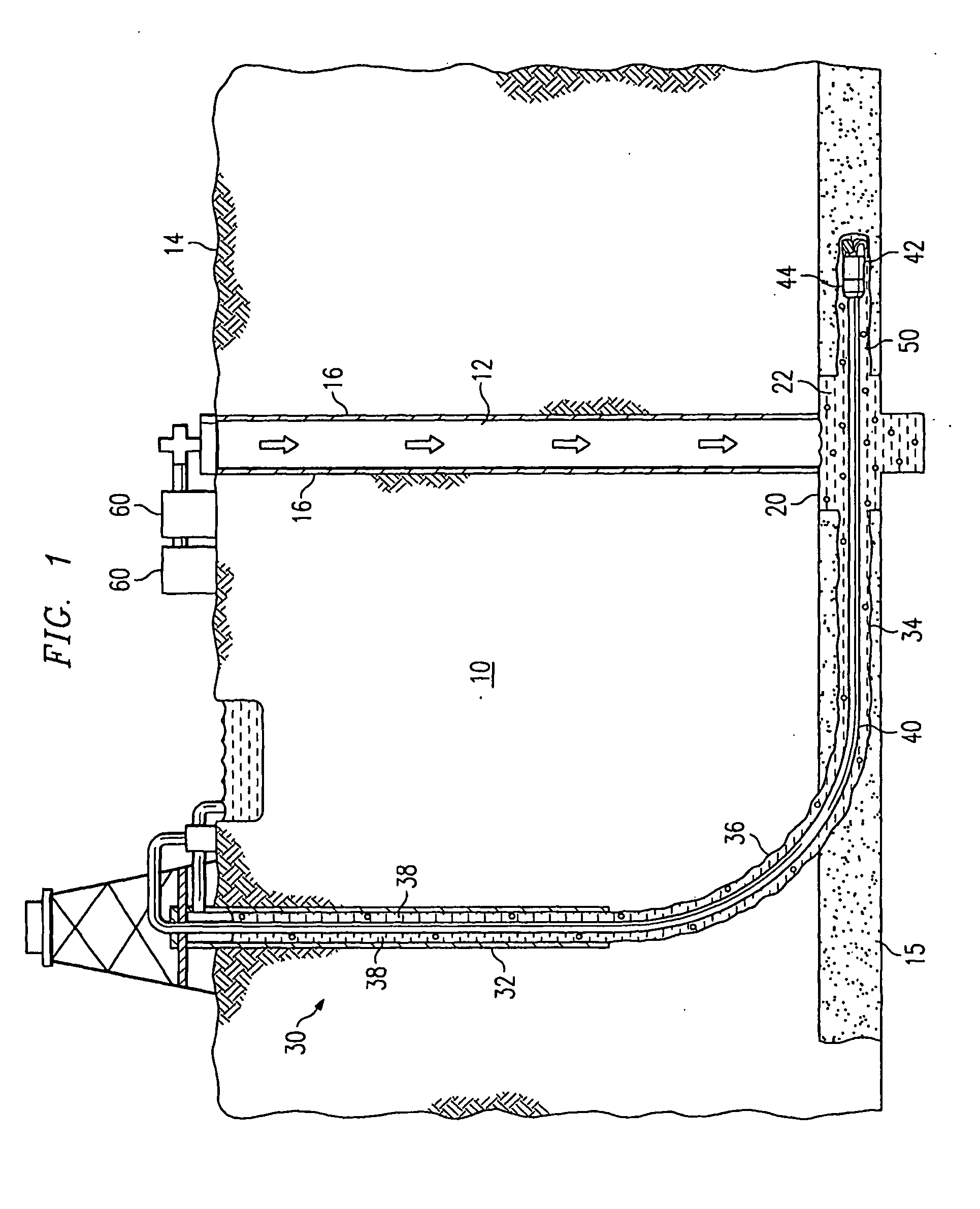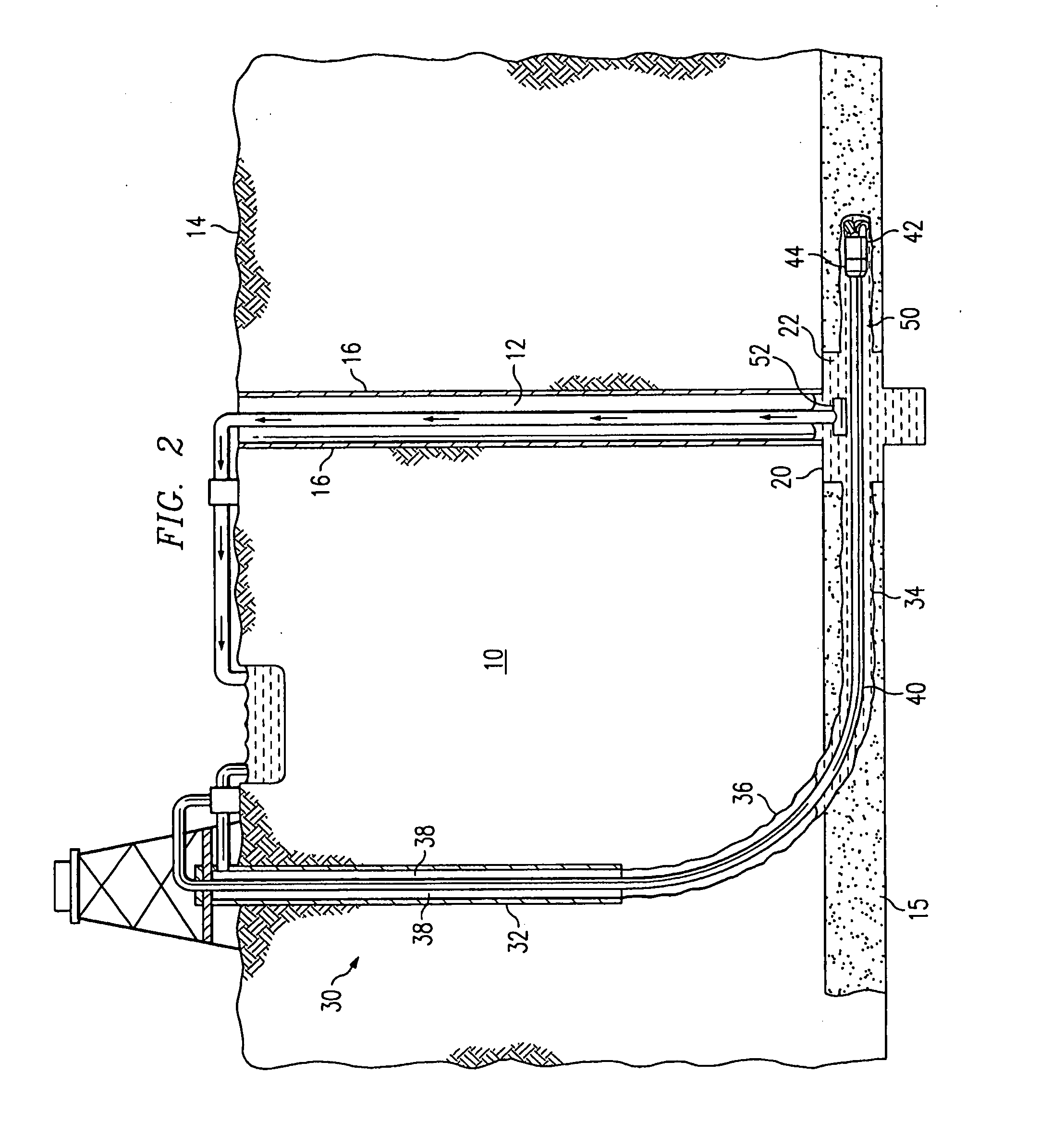Method and system for accessing subterranean deposits from the surface and tools therefor
a technology of subterranean deposits and methods, applied in the field of subterranean deposits recovery, can solve the problems of affecting the development and use of methane gas deposits, the depth of coal seams is relatively shallow, and the radius of the drain radius of vertical wells drilled into coal deposits for obtaining methane gas is small
- Summary
- Abstract
- Description
- Claims
- Application Information
AI Technical Summary
Problems solved by technology
Method used
Image
Examples
Embodiment Construction
I. Well Types
[0151]FIGS. 1 through 24 illustrate example types of wells that may be constructed according to the teachings of the invention. FIGS. 1 through 4 involve dual wells. FIG. 5 involves dual wells with dual zones. FIGS. 6A-7 involve a dual radius well. FIGS. 8-9 involve dual radius wells with dual zones. FIGS. 10-19 involve dual wells with an angled well. FIGS. 20-22 involve a slant well. FIGS. 23-24 involve slant wells with non-common surface wells, as well as pinnate patterns for other types of wells.
[0152] A. Dual Well
[0153]FIG. 1 illustrates formation of a dual well system 10 for enhanced access to a subterranean, or subsurface, zone from the surface in accordance with an embodiment of the present invention. In this embodiment, the subterranean zone is a tight coal seam having a medium to low permeability. It will be understood that other suitable types of zones and / or other types of low pressure, ultra-low pressure, and low porosity subterranean formations can be sim...
PUM
 Login to View More
Login to View More Abstract
Description
Claims
Application Information
 Login to View More
Login to View More - R&D
- Intellectual Property
- Life Sciences
- Materials
- Tech Scout
- Unparalleled Data Quality
- Higher Quality Content
- 60% Fewer Hallucinations
Browse by: Latest US Patents, China's latest patents, Technical Efficacy Thesaurus, Application Domain, Technology Topic, Popular Technical Reports.
© 2025 PatSnap. All rights reserved.Legal|Privacy policy|Modern Slavery Act Transparency Statement|Sitemap|About US| Contact US: help@patsnap.com



